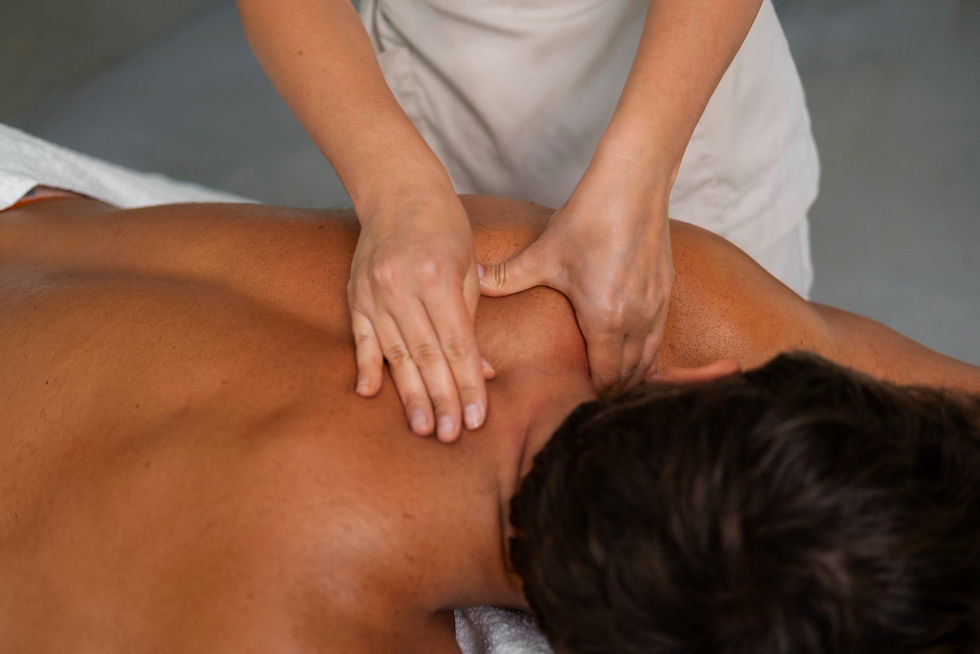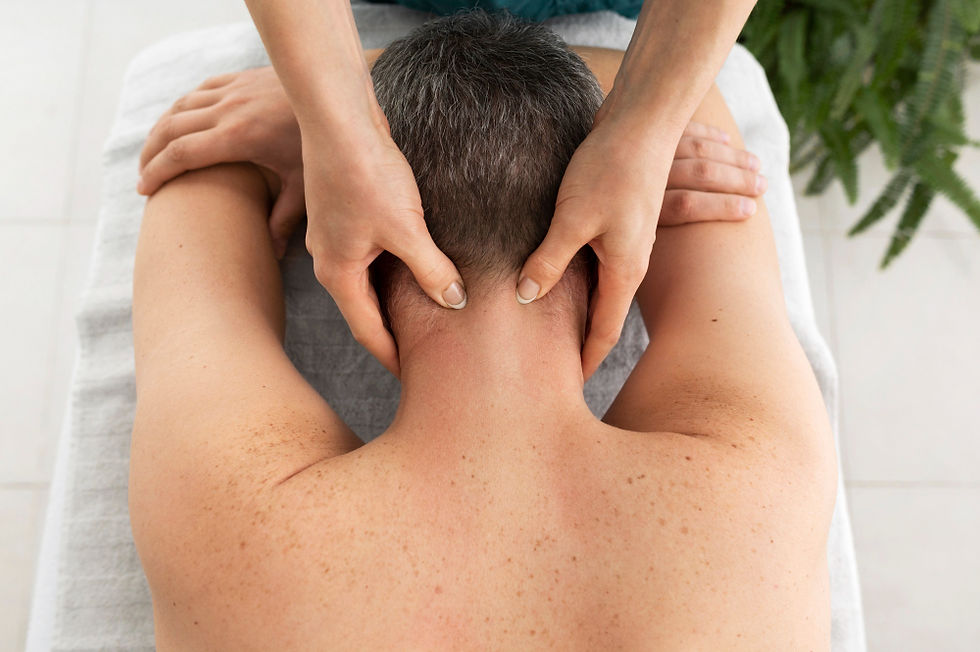Deep Tissue Massage vs Sports Massage: Understanding the Techniques
- laurenlill175
- Aug 12
- 3 min read
Massage therapy is a great way of maintaining muscle health, recovery, and wellness. Deep tissue massage vs sports massage is just one of the various options that always leave individuals wondering which of the two is best for them. Both treatments are applied in order to promote muscle function and alleviate pain, yet their technique, pressure, and desired effects are slightly different. The following are the primary differences outlined in depth to allow you to make an informed decision.

Key Factors in Deciding the Right Massage for You
1. Purpose and Aims
Deep tissue massage is designed to break down chronic muscle tension, work through knots, and improve long-term mobility. Deep tissue massage is most suitable for individuals with postural syndrome, repetitive strain syndrome, or chronic pain as a result of tight muscles.
Sports massage is specifically aimed at performance enhancement, injury prevention, and recovery. It also reduces tension but its approach lies in keeping the muscle in shape in the context of sport. Sports massage is widely applied by sports persons as part of regular training in order to keep muscles flexible and ready for performance.
2. Pressure and Intensity
Deep tissue massage includes slow, firm, sustained pressure impacting deeper layers of muscle fibers and connective tissue. Traversing sections of individual regions of interest slowly, certain sections are treated to firm pressure to dissolve adhesions. Even though it is extremely effective, there may be a minimal soreness for a day or two after treatment.
Pressure from sports massage also differs widely with the timing and purpose of the treatment. Pre-event sports massage would be a more superficial, stimulating massage to get the muscles up to speed, while post-event would be deeper pressure to deal with soreness. Intensity is conditioned based on sport, fitness level, and state of the muscle.
3. Techniques Used
Deep tissue methods including stripping (degliding pressure in the direction of muscle fibers) and friction (pressure applied transverse to muscle fibers) are utilized to break up scar tissue and knots. The movement is slower and controlled with a focus on depth rather than speed.
Sports massage is a combination of techniques such as compression, stretching, trigger point, and possibly even joint mobilization. It's more active and can also include assisted stretches to promote range of motion and flexibility, and it's most beneficial for active individuals.
4. Target Audience
Deep tissue massage is especially suited for survivors of chronic pain, muscle spasm, or restricted mobility. It is a suitable choice for survivors of trauma who have passed through the acute stage but are still suffering because of scar tissue or spasmed muscles. Office professionals with postural tension, or people with plain repetitive motion injury, also stand to gain from it.
Sports massage is intended for athletes and active lifestyle individuals. For training for a marathon, being an active sports participant, or exercising rigorously, sports massage maintains your muscles in the best possible condition. It is also helpful for those who experience regular muscle fatigue or stiffness as a result of exercising.
5. Timing and Frequency
Deep tissue massage can be booked as required, typically every couple of months or weeks, depending on the level of muscle tension. As it's working on areas of tension, it's not something to repeat multiple times per week.
Sports massage, however, is frequently included as part of the routine for an athlete. Some receive treatment weekly, or even more frequently, during intense training phases in order to promote ongoing muscle health and performance.
6. Recovery and Aftereffects
It is not uncommon to be sore for a day or so after a deep tissue massage, much like after exercise. This soreness is a sign of releasing tension in the muscles and should be followed by greater flexibility and reduced pain.
Sport massage recovery depends on pressure used and reason for the session. Pre-competition sport massage gets you pumped, while post-event sessions may leave the muscles slightly sensitive in the recuperation process.
Wrapping Up
Deep tissue massage vs sport massage, the decision is yours. Should you want to treat chronic pain, break up knots in your muscles, and improve long-term mobility, deep tissue massage is the way to go. If you're a sports person or someone who exercises regularly with great effort, then sports massage will have you playing better, recovering faster, and staying away from injury. Or, sometimes, by using both these techniques in conjunction with one another and keeping your muscles healthy, in flexibility, and pain-free, the best is achieved.








Comments